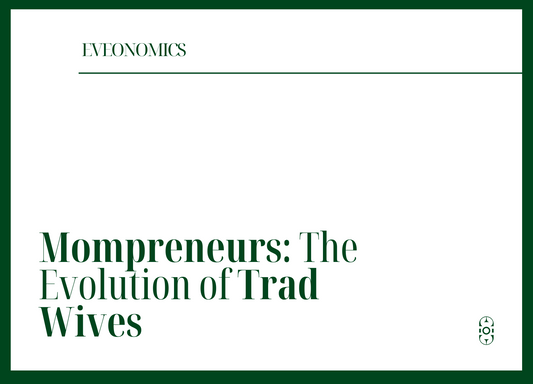Let’s talk about the power of giving back. It’s one thing to make a charitable donation, but it’s another to create a long-term strategy that allows you to make an impact on the causes you care about, all while enjoying the financial benefits of your generosity. Enter Donor-Advised Funds (DAFs). These innovative vehicles allow you to contribute to charity on your terms, offering flexibility, tax advantages, and the ability to direct your giving over time. In this article, we’ll unpack how DAFs work, the benefits they provide, and how wealth managers help clients use them to elevate their charitable giving.
Understanding Donor-Advised Funds
What is a Donor-Advised Fund (DAF)?
Think of a Donor-Advised Fund as your own personal giving account. You contribute assets—cash, stocks, or even real estate—to the fund, take an immediate tax deduction, and then recommend grants to your chosen charities over time. It’s a powerful way to keep your giving organised and strategic. Unlike writing a cheque to charity, which is one-and-done, DAFs give you the freedom to donate assets at any time and direct those donations to causes that align with your values—whenever it feels right for you.
How DAFs Work
Here’s how it goes: you open a DAF with a sponsoring organisation (like a charity or financial institution), contribute assets, and get an immediate tax deduction. Then, you can recommend grants to charitable organisations whenever you choose. The best part? You get to decide the timing of your donations, meaning you can make contributions during a high-income year and space out the distributions to charity over several years. This gives you ultimate control, all while reaping the tax rewards upfront.
The Benefits of Donor-Advised Funds
Flexibility in Giving
DAFs are all about flexibility. You don’t have to make your donations all at once. Contributing to a DAF means you can give to multiple charities over time and still enjoy the tax deductions in the year of the contribution. Whether you're ready to donate immediately or prefer to take your time selecting your recipients, a DAF allows you to spread out your giving while staying in control of the entire process.
This flexibility also means you can take advantage of tax breaks when it makes the most sense for you. For instance, if you're in a particularly high-income year, you can contribute to a DAF, get an immediate tax deduction, and distribute those funds to charities over several years, maximising your philanthropic impact.
Tax Benefits
One of the most powerful aspects of DAFs is the immediate tax deduction. When you contribute assets to your DAF, you can take a charitable deduction based on the full value of the donation, even if the funds aren’t distributed to charity right away. This provides a fantastic opportunity to reduce taxable income in high-earning years.
Additionally, if you donate appreciated assets—like stocks or real estate—you can avoid paying capital gains tax, which means your contribution to charity goes even further. For high-net-worth individuals looking to reduce their taxable estate, this is an invaluable strategy.
Streamlined Giving
Managing charitable giving across multiple organisations can be a hassle. But with a DAF, you can consolidate all of your giving into one account. Instead of writing separate cheques for each charity, your donations are organised under one umbrella, simplifying your philanthropic activities. The sponsoring charity handles the administrative aspects, so you can focus on what matters most—making a meaningful impact on the causes you care about.
How Wealth Managers Use DAFs
Guidance in Charitable Giving
For those looking to set up a DAF, wealth managers are invaluable partners. They help clients navigate the nuances of charitable giving, from selecting the right assets to donate, to ensuring the contributions align with their broader financial goals. A wealth manager will consider your financial situation and future tax implications, ensuring that your charitable donations make the most sense from a tax and strategic standpoint.
Wealth managers also assist with the long-term planning of charitable giving, helping clients develop a strategy that fits their financial trajectory. Whether you're giving now or planning for future generations, a wealth manager can help you structure your DAF in a way that ensures it delivers lasting impact.
Long-Term Charitable Strategy
DAFs aren’t just for one-off donations—they’re excellent tools for long-term charitable planning. With a DAF, you can fund charitable causes for years, or even decades, and ensure that your giving aligns with your values throughout your lifetime. It’s not just about writing cheques; it’s about creating a legacy of giving that reflects the causes you care about most.
Immediate vs. Long-Term Giving
Immediate Tax Deduction
DAFs allow you to make an immediate impact in terms of tax savings. When you contribute to a DAF, you receive a tax deduction in the year of the donation, even though the funds may not be disbursed to charity for some time. This can be an especially valuable strategy if you're looking to reduce your taxable income for a given year—whether due to a large windfall, a business sale, or other financial circumstances.
The Ability to Contribute Over Time
The beauty of a DAF is that while the tax benefits are immediate, your charitable contributions can be spread out over time. You don’t need to rush to distribute all the funds at once; you have the flexibility to determine when and where the money goes. This ensures you have the time to choose your charitable partners carefully and thoughtfully, giving you more control over your philanthropic decisions.
Key Considerations for Choosing a DAF
Charity Selection
You have the freedom to recommend grants to any qualified charity. However, it's important to note that the funds must be distributed to organisations that meet the criteria for charitable organisations. Most DAF sponsors provide a list of eligible charities, but the decision-making is ultimately up to you.
Minimum Contribution Requirements
To open a DAF, most sponsors require an initial contribution, which can range from £5,000 to £25,000 depending on the provider. It’s essential to understand the minimum contribution requirements before opening a DAF, as well as any ongoing contribution expectations or fees that might apply.
Investment Options
Once your contribution is placed in the DAF, it can be invested according to your preferences. Many DAF sponsors offer a variety of investment options, allowing your donation to grow over time before it is granted to charity. This can increase the value of your donation, furthering your charitable impact.
Alternatives to DAFs
Comparing DAFs to Private Foundations
DAFs are often compared to private foundations, but the two are very different in terms of setup and maintenance. Private foundations are more complex, require more administrative work, and are subject to stricter regulations. For many, DAFs are a simpler and more cost-effective alternative. If you’re looking for a straightforward way to make an impact without the heavy lifting of foundation management, DAFs are a perfect choice.
Real-Life Examples
Success Stories
Consider the case of a philanthropist who used a DAF to contribute £1 million worth of stocks to a variety of educational causes over several years. By contributing appreciated assets, the philanthropist received an immediate tax deduction, avoided capital gains tax, and ensured their giving strategy aligned with their values for the long term.
Lessons Learned
One family found that their charitable giving lacked focus and consistency. After setting up a DAF, they were able to create a clear strategy for giving, making it easier to track donations, engage with causes they believed in, and leave a legacy that would benefit future generations.
The Growing Popularity of DAFs
DAFs have become an increasingly popular vehicle for charitable giving, especially as people look for ways to streamline their philanthropy. In fact, more and more individuals are realising the power of combining strategic tax planning with charitable giving, and DAFs are becoming a central part of that process.
Legal and Compliance Considerations
DAFs are subject to regulations by the IRS, ensuring that the funds are used for charitable purposes. While donors maintain control over where the funds go, there are rules in place to ensure transparency and accountability in how those funds are distributed. It’s important to work with a wealth manager and a tax advisor to ensure compliance and that the DAF is set up correctly.
The Next Level
If you’re looking to take your charitable giving to the next level, a Donor-Advised Fund (DAF) might be just what you need. Work with your wealth manager to see how a DAF can maximise your philanthropic impact, provide immediate tax benefits, and help you build a legacy that reflects your values. In conclusion, Donor-Advised Funds are revolutionising charitable giving by offering flexibility, tax advantages, and a streamlined way to manage your contributions. Whether you're starting out or aiming to create a lasting legacy, a DAF gives you the structure and freedom to give back on your own terms while aligning with your financial goals.
*This article is for general information purposes only and is not financial advice. We are not licensed financial advisors. Please consult a qualified professional before making any investment decisions to ensure they fit your specific financial situation.





